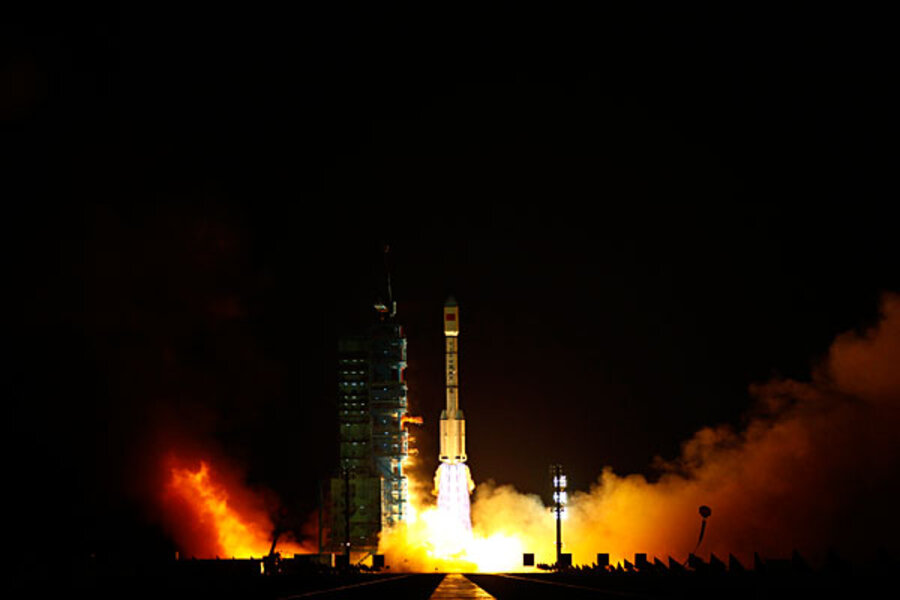Can China build its own space station? A crucial test looms (VIDEO)
Loading...
Two Chinese spacecraft are set to perform the country's first orbital docking Wednesday, perhaps as early as 1:15 p.m. Eastern Daylight Time.
If successful, the event would represent a significant milestone on the country's path to orbiting a space station early next decade.
On Nov. 1, China launched an unmanned Shenzhou capsule to perform the docking. The capsule, modeled after the Russian Soyuz capsule, has carried six taikonauts into space during three missions, beginning with the country's first manned launch in 2003.
The capsule's target is China's Tiangong 1, a 9.4-ton prototype module similar in size to the docking module the Russians contributed to the International Space Station. Tiangong 1 sleeps two, and also hosts an exercise machine. The China National Space Administration launched the module Sept. 29.
The docking represents a hybrid approach, teaming maneuvers controlled from the ground with an automated system for final approach and mating.
The mission calls for controllers to guide Shenzhou 8, the mission's official designation, to within about 30 miles of Taingong 1. After that, the automated docking system takes over, according to China Daily.
The two craft will remain docked for 12 days. Then, as an added confidence builder, the two will separate to a distance of about 150 feet and Shenzhou 8 will perform a second docking.
Two days later, the capsule will return to Earth.
The mission also carries 17 life-science experiments designed by scientists in China and Germany.
A successful docking would open the way to two more trips to Tiangong 1 in 2012, each bringing taikonauts. When those are complete, China plans to deorbit the module in anticipation of Tiangong 2 and 3, both larger than the prototype. Current plans call for launching Tiangong 2 in 2013 and Tiangong 3 in 2015.
Each launch represents a successive technology demonstration project, with Tiangong 3's design serving as the blueprint for modules that will later form China's space station.
[ Video is no longer available. ]





